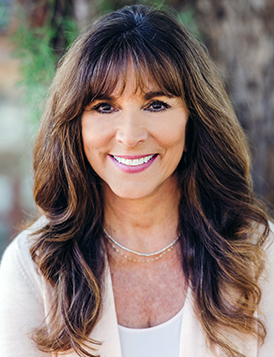Why Health Care Interoperability Requires Weaning Ourselves from Fax
Bevey Miner
4/25/2023
Here's a riddle for you. Why would a health information exchange (HIE) widely known as a digital innovator maintain a costly infrastructure built on paper-based faxing, one of the oldest forms of analog communication?
By every relevant metric, Delaware Health Information Network (DHIN) is a health information technology (IT) pioneer. In 2007, DHIN became the country's first active statewide HIE. The organization established and now operates several of Delaware's mission-critical IT projects, including its Health Care Claims Database. DHIN has built digital tools that integrate with dozens of electronic health records (EHRs). The organization even helped develop a patent-pending mobile messaging app for consumers.
Yet DHIN continues to communicate with thousands of Delaware's health care providers by paper fax. Why?
How the Network Effect Affects You
DHIN works with more than 11,000 health care professionals. Every acute-care hospital and long term care facility in the state receives patient data from DHIN. More than 99 percent of all Delaware health care providers who order medical records place their requests with DHIN. But many of these providers still prefer to use fax machines for transmitting electronic protected health information (ePHI).
In fact, of the 14 million medical records that DHIN delivers every year, the organization sends roughly 5 percent of them—700,000 records—by paper fax, at the providers' requests. As a result, DHIN has had little choice but to maintain its faxing capability.
Sound familiar?
Yes, You Need Fax for the Foreseeable Future, But…
As a health care industry professional, you've no doubt heard the frustration from your staff about having to share patient records by fax because other providers, payers, and pharmacies demand it. And if you're an IT professional, you've no doubt experienced fax-related frustrations of your own—troubleshooting an aging fax infrastructure, negotiating contracts with telecom providers for fax phone lines, calming a coworker enraged over a yet another paper jam, etc.
For any number of number of reasons—whether they want to optimize the return on investment of their fax infrastructure investments or “because that's how we've always done it" —organizations throughout the health care ecosystem are going to continue to use fax for years to come. A senior federal official estimated in late 2021 that 70 percent of health providers still transmit medical information using a fax machine.
In other words, your practice will need some mechanism of sending and receiving faxes for the foreseeable future. But that does not mean you need to keep using a fax machine or on-premise fax server.
Two Tips for Achieving Interoperability Quickly
The move toward health care interoperability—which started as an industry goal but is now a set of federal health technology mandates—requires that your practice be able to securely and seamlessly exchange health data with your patients, partners, vendors, and organizations across the health care ecosystem.
Achieving this level of interoperability becomes more difficult when you recognize the fragmented nature of health care transmission technologies. You're probably already finding it difficult to share important patient data in a timely manner, given that:
- Your vendors and partners use different EHRs, many of which still use proprietary technology and are not compatible with yours.
- Some, but not all, use direct secure messaging to transmit ePHI.
- Some, but not all, prefer to exchange patient information using health level 7 (HL7) messages.
- Some, but not all, continue to transmit ePHI by fax.
This underscores the current challenge every health care organization faces in trying to meet the government's standards for interoperability: How can you know which data exchange technologies to implement?
1. Find one interoperability platform for all of these communications.
Instead of trying to figure out which of these data exchange technologies make the most sense to invest your limited time and IT resources, a best practice would be to advance your organization many steps toward true health care interoperability with a single solution.
With such an interoperability platform, your staff will have a single digital platform for many of their everyday data exchange tasks such as:
- Sending and receiving (and even electronically signing) digital faxes.
- Proactively pulling patients' health data into the proper medical record.
- Transforming unstructured data (such as faxes) to structured data for EHR consumption.
- Send patient record queries for providers on Carequality and data exchange networks.
- Communicating via HL7/FHIR messages.
- Communicating via direct secure messaging.
2. Make sure the interoperability platform includes intelligent cloud faxing.
Health care organizations rolling out this type of unified workflow environment are taking giant leaps toward interoperability—while streamlining their staff's workflows, reducing the risks of error inherent in manually re-entering data from one system to another, and lowering their operational costs.
But if you're still struggling with the inefficiencies of paper-based fax workflows, the real highlight of such a platform is that it lets you quickly establish an enterprise-caliber, cloud-based faxing environment. That means your employees can securely receive, review, triage, edit, combine, separate, electronically sign, and send patient faxes digitally from any computer, tablet, or smartphone.
 Finally, deploying a best-of-breed interoperability solution can also create other workflow improvements that can save your staff time and frustration, lower your organization's costs, and help you deliver better patient care. Just a few examples:
Finally, deploying a best-of-breed interoperability solution can also create other workflow improvements that can save your staff time and frustration, lower your organization's costs, and help you deliver better patient care. Just a few examples:
- Import patient data from (and export to) any EHR system.
- Apply natural language processing (NLP) and artificial intelligence (AI) to your faxes—even handwritten faxes—to automatically identify their contents, populate the relevant fields, and take the appropriate next actions.
- Respond to patient query requests, submit prior authorization forms, and exchange data via EHR all within a single pane of glass.
Bevey Miner is executive vice president of health care strategy and policy at Consensus Cloud Solutions, Inc.